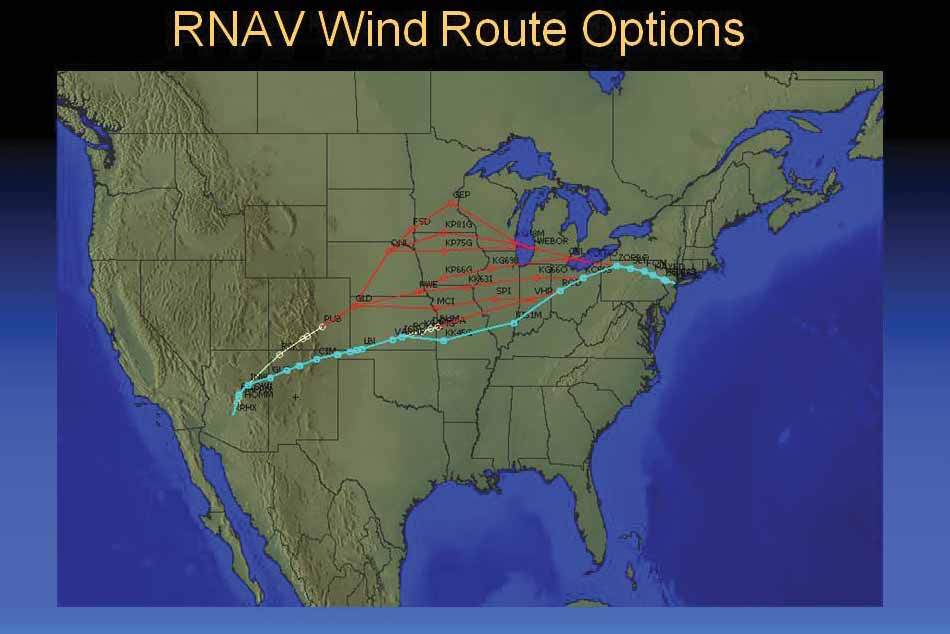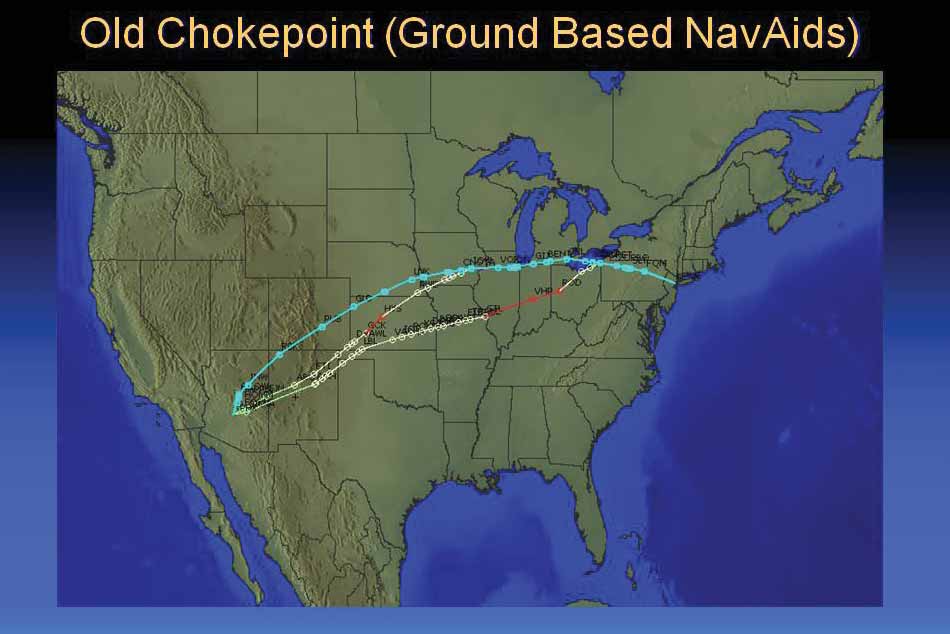
Updated May 21, 2010
In April 2010, the Federal Aviation Administration (FAA) announced a new set of routes for traffic headed from the Western United States into the New York metros that could be used by air traffic control (ATC). These new routes are called the “wind routes.”
Background
For a number of years, the air carriers have made use of what are known as “chokepoint routes.” These routes funneled traffic from various parts of the western US through one or two fixes located over the Midwest. The effect was that the flow of traffic was consolidated and organized at these fixes, long before it arrived in the complex and congested airspace surrounding the New York metropolitan area.
The chokepoint routes, however, had some limitations. First, they were only available to either Newark International Airport (EWR) or to John F. Kennedy International Airport (JFK), meaning that they were largely used by the air carriers only. Secondly, the chokepoint routes were static – they could not be adjusted to take advantage of the jetstream winds.
What Are the Wind Routes?
In order to address these issues, the FAA’s Flow Evaluation Team (FET), which is part of the Collaborative Decision Making (CDM) Workgroup, created a new set of routes called the wind routes. These new routes were implemented as of April 26, 2010, and can be found in the FAA’s National Playbook – a listing of the routes that air traffic managers can utilize depending on conditions.
Unlike the chokepoint routes, the new wind routes are available not only to EWR and JFK, but also to LaGuardia International Airport (LGA) and to Teterboro Airport (TEB). This expansion allows ATC to further simplify the flow of traffic on busy days.
The routes are also dynamic, meaning that they can be modified as needed in order to take advantage of favorable winds, which change on a daily basis. The routes are dynamic because they are based upon RNAV waypoints rather than upon navigational fixes defined by ground-based navigational aids. As can be seen in the accompanying graphics below, the wind routes offer much more flexibility than the chokepoint routes did, to accommodate changes in the winds aloft.

What Do the New Wind Routes Mean for Business Aviation?
Operators will not likely plan to use the wind routes in advance, but can expect to see them issued in an FAA advisory as either required or recommended. (FAA advisories are issued in the FAA Advisories Database.) If an operator sees an advisory, activating the wind routes, they can file the appropriate route. If another route has already been filed, the operator’s desired route may be replaced with one of the wind routes by ATC.
The routes will be introduced in two phases. Phase 1 began on May 10, 2010, and introduces the EWR and LGA wind routes to be utilized along with the current JFK chokepoint routes. Due to some initial capacity concerns, users can expect some miles-in-trail restrictions along the routes.
Phase 2, which will include the new JFK/TEB wind routes, will begin during the summer of 2010.
For more information about the wind routes, view the latest CDM Spring Training or contact NBAA Air Traffic Services.


 International Business Aviation Council Ltd.
International Business Aviation Council Ltd.